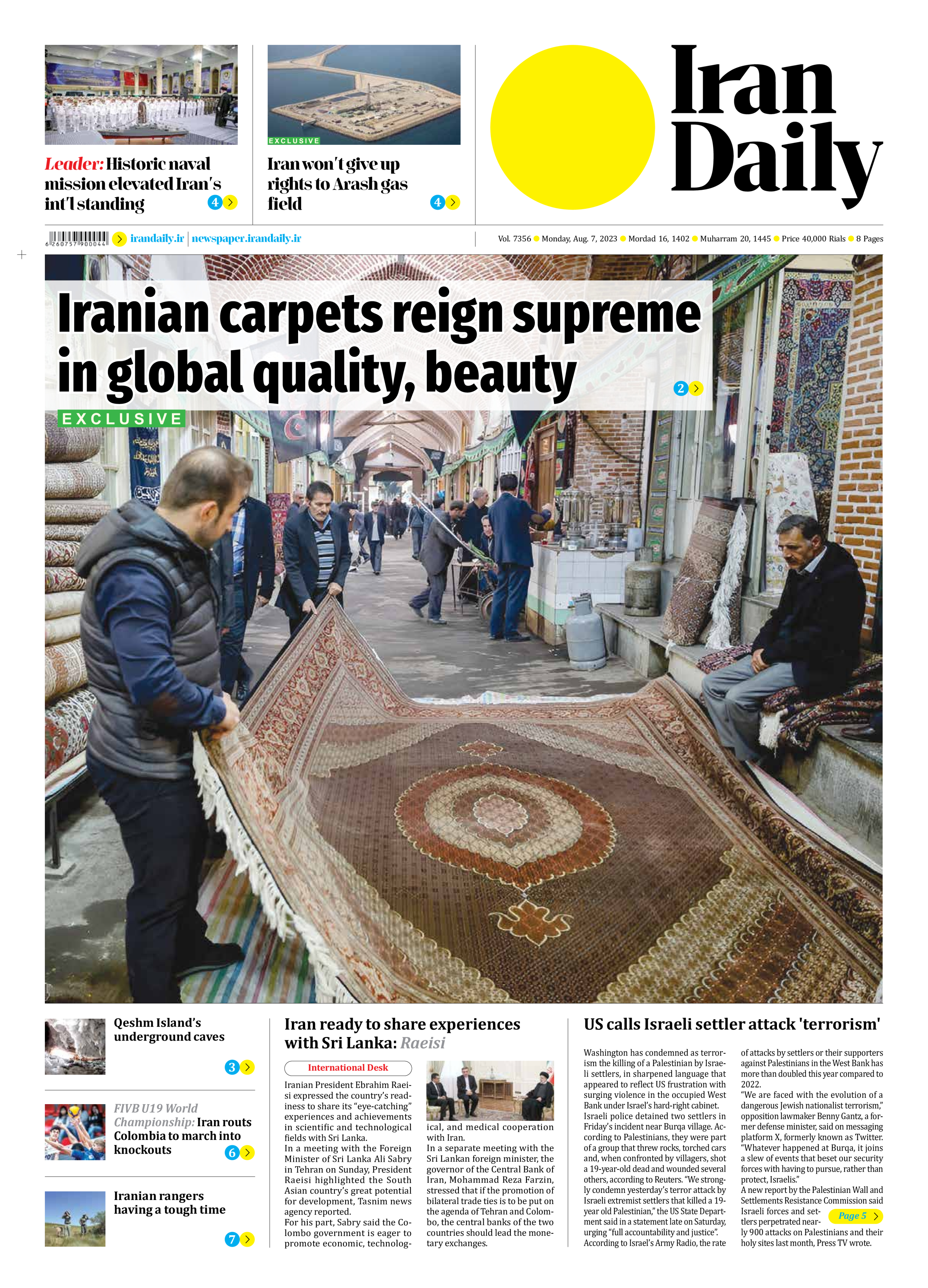
Iranian carpets reign supreme in global quality, beauty
By Sadeq Dehqan
Staff writer
Iran’s tradition of crafting handwoven carpets boasts a rich historical legacy, securing its top position globally in terms of both quality and aesthetic allure. A significant archaeological revelation was made at a site called Pazyryk, unearthing the world’s most ancient handwoven rug. This artifact, dating back three millennia, stands as a testament to the Iranian mastery in carpet weaving.
The worldwide association of handwoven carpets with Iran is an unmistakable fact. The very mention of Iran conjures images of these exquisite creations, a recognition unparalleled and unchallenged by any nation. The identity of Iran is intricately woven into these pieces, such that international conceptions of the country frequently intertwine with thoughts of its iconic handwoven carpets.
However, recent years have seen India ascend to the forefront of the global carpet trade, displacing Iran from its long-held position. The competition in the realm of handwoven rug production and export is fierce, with India, Pakistan, China, Nepal, and Turkey vying for prominence alongside Iran. These rivals strategically capitalize on Iranian designs, mimicking local patterns and styles, all while marketing their products under the Iranian carpet banner.
In an interview with Iran Daily, Ahmad Karimi Esfahani, the head of Iran’s Union of Handwoven Carpet Exporters, says despite the shifting landscape, Iranian carpets “continue to reign supreme in terms of quality on the global market”.
He underscores the disconcerting trend of competitors leveraging Iranian designs without appropriate acknowledgment, a practice that blurs the lines between authenticity and imitation.
“India, for instance, markets its wares as ‘Kashan Indian’ or ‘Isfahan Indian,’ notwithstanding the absence of any connection to these Iranian locales,” the businessman said.
The period spanning 1979 to 1995 witnessed handwoven carpets constituting a substantial share —approximately 40-45% — of Iran’s non-oil exports. During this era, the export value of Iran’s handwoven carpets reached a $1.75 billion annually, a substantial fraction of the country’s total non-oil exports valued at $4 billion.
Esfahani traces a decline in handwoven carpet exports after 1995 to various hurdles, including restrictive trade regulations and shifting customer preferences. A diversification in rug styles worldwide challenged the traditional notions of carpets, prompting a decline in demand. This shift culminated in a gradual reduction in Iran’s handwoven carpet exports, currently amounting to $50-55 million annually.
Resolving impediments tied to exportation, including issues arising from sanctions and financial transactions, is deemed crucial by Esfahani. He asserts that without a resolution to these challenges, remarkable growth in exports remains elusive. However, optimism is kindled by the prospect of overcoming these hindrances, potentially catapulting current export figures to multiple times their current standing.
The businessman emphasizes a crucial aspect that Iranian authorities must consider to bolster exports: effective market regulation. This measure aims to ensure that carpet weavers are not confronted with shortages of essential raw materials, thereby obviating the need to resort to chemical dyes in their productions.
“A hallmark of Iranian carpets lies in their utilization of natural and herbal hues and materials, underscoring the significance of preserving this tradition.”
A diverse array of nations spanning the Western and European regions, Central Asia, East Asia (including Japan), and even African countries comprise the traditional clientele for Iranian handwoven carpets.
Esfahani highlights the urgency of expanding into new markets for Iranian carpets, suggesting that the economic attachés in Iranian embassies across the globe should intensify their efforts.
He said several export destinations have been curtailed due to multifarious reasons, including sanctions, necessitating the pursuit of alternative markets to offset such losses.
The handwoven carpet sector of Iran stands as a cornerstone of sustainable employment generation across villages and cities across Iran. Esfahani highlights a striking statistic: approximately two million households in Iran rely on handwoven carpets for their livelihoods. Given an average household size of four individuals, the economic sustenance of nearly 10% of Iran’s population is either directly or indirectly linked to the handwoven carpet industry.







